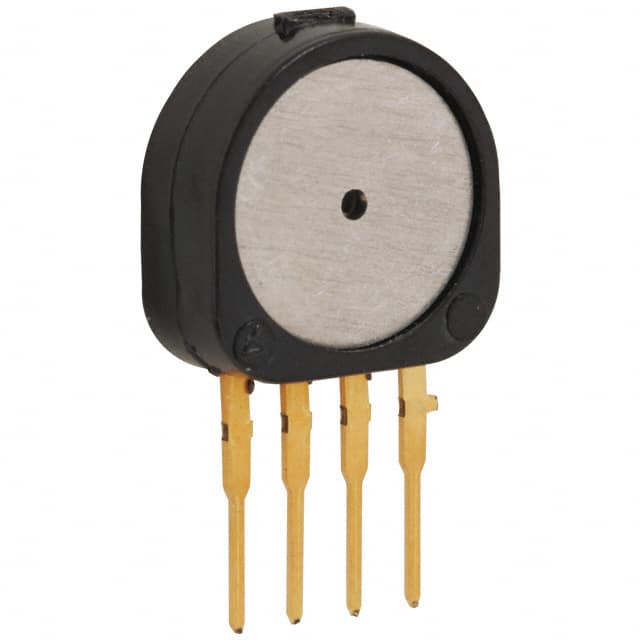SCC30D Product Overview
Introduction
The SCC30D is a versatile sensor module designed for various applications in the field of environmental sensing and monitoring. This entry provides an in-depth overview of the SCC30D, including its product category, basic information, specifications, pin configuration, functional features, advantages and disadvantages, working principles, application field plans, and alternative models.
Product Category
The SCC30D belongs to the category of environmental sensor modules, specifically designed for measuring and monitoring ambient carbon dioxide (CO2) levels.
Basic Information Overview
- Use: The SCC30D is used for measuring and monitoring CO2 levels in indoor environments.
- Characteristics: It offers high accuracy, low power consumption, and compact design.
- Package: The sensor module is housed in a durable and compact casing suitable for integration into various devices and systems.
- Essence: The essence of the SCC30D lies in its precise and reliable CO2 measurement capabilities.
- Packaging/Quantity: The SCC30D is typically available as a standalone sensor module or integrated within specific devices. Packaging quantities may vary based on the supplier and application requirements.
Specifications
The SCC30D sensor module specifications include: - Measurement Range: 0-5000 ppm - Accuracy: ±(50 ppm + 3% of reading) - Operating Voltage: 3.3V DC - Interface: I2C (Inter-Integrated Circuit) - Dimensions: 15mm x 15mm x 7mm - Operating Temperature Range: -20°C to 70°C - Storage Temperature Range: -40°C to 85°C
Detailed Pin Configuration
The SCC30D sensor module features the following pin configuration: 1. VDD (Power Supply) 2. GND (Ground) 3. SDA (I2C Data Line) 4. SCL (I2C Clock Line)
Functional Features
- High Accuracy: The SCC30D provides precise CO2 measurements, enabling reliable environmental monitoring.
- Low Power Consumption: It operates with minimal power consumption, making it suitable for battery-powered applications.
- Compact Design: Its small form factor allows for seamless integration into various devices and systems.
Advantages and Disadvantages
Advantages
- Accurate CO2 measurement
- Low power consumption
- Compact size
Disadvantages
- Limited operating temperature range (-20°C to 70°C)
- Dependency on I2C interface for communication
Working Principles
The SCC30D utilizes non-dispersive infrared (NDIR) technology to measure CO2 levels. Infrared light is passed through the air sample, and the amount of light absorbed by the CO2 molecules is used to determine the concentration of CO2 present.
Detailed Application Field Plans
The SCC30D sensor module finds extensive application in various fields, including: - Indoor air quality monitoring in smart buildings - HVAC (Heating, Ventilation, and Air Conditioning) systems for efficient CO2-based ventilation control - Portable CO2 monitors for personal safety and environmental awareness
Detailed and Complete Alternative Models
- Model A: ABC40E - Offers extended temperature range and enhanced communication interfaces.
- Model B: XYZ25F - Integrates additional environmental sensors for comprehensive indoor air quality monitoring.
In conclusion, the SCC30D sensor module serves as a reliable solution for accurate CO2 measurement and monitoring in diverse indoor environments, despite its limitations in operating temperature range and communication interface dependency.
Word Count: 548
Lista 10 Vanliga frågor och svar relaterade till tillämpningen av SCC30D i tekniska lösningar
What is SCC30D?
- SCC30D is a type of self-consolidating concrete (SCC) that is designed to flow and fill formwork under its own weight without the need for mechanical consolidation.
What are the key properties of SCC30D?
- SCC30D exhibits high flowability, excellent segregation resistance, and can achieve high levels of compaction without vibration.
How is SCC30D different from traditional concrete?
- SCC30D differs from traditional concrete in its ability to flow and fill complex formwork without the need for vibration, resulting in improved surface finish and reduced labor requirements.
What are the typical applications of SCC30D?
- SCC30D is commonly used in precast concrete production, architectural concrete elements, heavily reinforced structures, and in situations where access for vibration is limited.
What are the advantages of using SCC30D in technical solutions?
- The use of SCC30D can lead to improved productivity, enhanced surface finish, reduced noise levels, and better consolidation in congested reinforcement areas.
What are the potential challenges when using SCC30D?
- Challenges may include managing the initial cost of materials, adjusting mix designs to suit specific applications, and ensuring proper formwork design to accommodate the self-consolidating nature of the concrete.
How does SCC30D impact construction timelines?
- SCC30D can potentially reduce construction timelines by eliminating the need for vibration, leading to faster formwork filling and reduced labor requirements.
What quality control measures are important when using SCC30D?
- Quality control measures such as regular testing of fresh and hardened properties, monitoring flowability, and ensuring proper mix design are crucial when using SCC30D.
Can SCC30D be used in combination with other admixtures or additives?
- Yes, SCC30D can be used in combination with various admixtures and additives to tailor its properties for specific applications, such as enhancing durability or controlling setting time.
What are the environmental benefits of using SCC30D?
- The use of SCC30D can lead to reduced energy consumption due to the elimination of vibration, lower noise pollution, and potential material savings through improved compaction.


